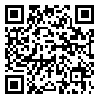Volume 19, Issue 76 (2022)
LIRE 2022, 19(76): 13-19 |
Back to browse issues page
Download citation:
BibTeX | RIS | EndNote | Medlars | ProCite | Reference Manager | RefWorks
Send citation to:



BibTeX | RIS | EndNote | Medlars | ProCite | Reference Manager | RefWorks
Send citation to:
Rasooli Mehrabani R, Babayi M. Impressibility of Qul Ali from Bahr al-Mahabbah and al-Settin al-Jame' in composing Qissa’i Yusuf. LIRE 2022; 19 (76) :13-19
URL: http://lire.modares.ac.ir/article-41-65126-en.html
URL: http://lire.modares.ac.ir/article-41-65126-en.html
1- , R.Rasooli.M@ut.ac.ir.
Abstract: (924 Views)
This research aimed to demonstrate that Ali, a Muslim Volga Bulgar poet, drew inspiration from Bahr al-Mahabbah fi Asrar al-Mavaddah and al-Settin al-Jame' le-Lataif al-Basatin (or Qissa-I Yusuf) in composing Qissa’i Yusuf (The Story of Joseph). Then, the author's writing style and method of adaptation of the two works were analyzed. In so doing, the French School of Comparative Literature, which is based on direct effect, was utilized. This study asserts that Ali's Qissa’i Yusuf has many similarities with and few differences from Bahr al-Mahabbah and al-Settin al-Jame' in the plot narrative (and even sub-narratives). Moreover, some parts are entirely similar to the two said works in expression and the arrangement of story details. In some non-fictional aspects, he has also adapted the two works. In some instances, in addition to similarity with al-Settin al-Jame' in expression, Ali has used its Persian words in his book. Ali has also pointed out that he was proficient in Persian and Arabic. In general, it seems that Ali has considered the two works and, in disagreements, has gathered and versified the narratives of the two works together, and at times has selected a more detailed narrative, and wherever appropriate, he has elaborated on emotional dialogues and descriptions.
Article Type: Original Research |
Subject:
Adaptive literature
Received: 2021/03/8 | Accepted: 2021/07/19 | Published: 2022/09/21
Received: 2021/03/8 | Accepted: 2021/07/19 | Published: 2022/09/21
Send email to the article author
| Rights and permissions | |
 |
This work is licensed under a Creative Commons Attribution-NonCommercial 4.0 International License. |










